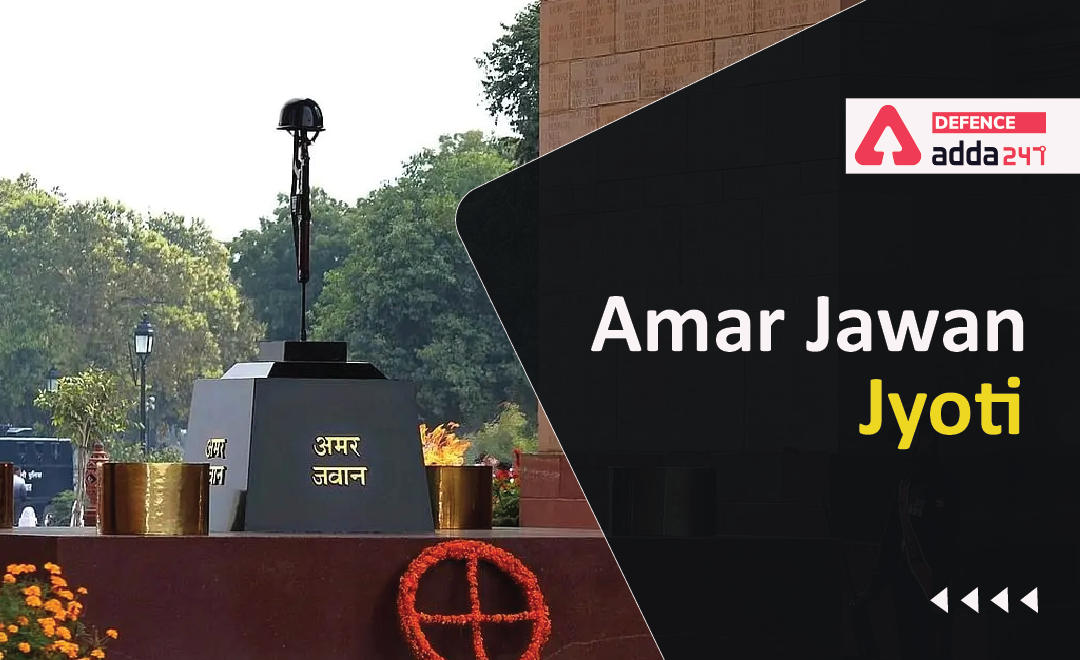Amar Jawan Jyoti
“The tyrant dies and his rule is over, the martyr dies and his rule begins.” — Soren Kierkegaard
The History of India is written with the blood of our War heroes who fought till their last breath for one goal and that was the safety and security of their motherland, The Amar Jawan Jyoti at IndiaGate was an eternal flame that paid tribute to the never dying Spirit of our martyrs spreading the message of patriotism, but recently the Amar Jawan Jyoti made a big headline, in this article we will find out why?
Amar Jawan Jyoti News- Why in News?
The Amar Jawan Jyoti was recently put out by the government only to merge it with the one at National War Memorial, this decisions got mixed reactions from the Audience, some were in support while others not,it invited various political Headline and became a major Headline, some politicians cited it as Disrespect of our martyrs, while the logic government gives for merging the two flames is , The National war memorial is the symbol of Independent India, The India gate was built to commemorate the British India soldiers killed between 1914 – 21 in different actions including the first World War, while the National War Memorial include all the soldiers killed before India attained independence or after it became independent. So it was prudent to remember all the martyrs together given that National War Memorial is in close vicinity of India Gate.
It is hard to deduce as the Flame in India Gate has great sentiments associated with it, it is about nostalagia and emotions on the other hand the Fact Government presents holds value also.
The Glorious History Behind Amar Jawan Jyoti
India Gate was unveiled in 1931, it was designed by Edward Lutyens, while the Amar Jawan Jyoti was added after the Indo- Pak war of 1971,to commemorate the valor of Indian soldiers who had laid down their lives in the 1971 Indo – Pak War. Prime Minister Indira Gandhi had inaugurated it on Republic Day 1972, after India defeated Pakistan in December 1971.
The base was 15 square feet (2,200 sq in) with a height of 4 feet 3 inches. The central pedestal was 3 feet 2 inches in height The key elements of the Amar Jawan Jyoti included a black marble plinth, a cenotaph, which acted as a tomb of the unknown soldier. The plinth had an inverted L1A1 self-loading rifle with a bayonet, on top of which was a soldier’s war helmet. The installation had four urns on it, with four burners.
Amar Jawan Jyoti Interesting Facts
- From 1971 to 2006, the flame was fueled by Liquefied Petroleum Gas (LPG) cylinders
- A single LPG cylinder would be able to provide fuel for one urn for about 36 hours.
- LPG cylinders were replaced by Piped Natural Gas (PNG), a safer and more economical option
- On normal days one of the four burners were kept alive, but on important days like the Republic Day, all four burners were lit.
- The burner were never Allowed to distinguish.



 Important Topics to Score 300+ in NDA GA...
Important Topics to Score 300+ in NDA GA...
 NDA Exam Pattern 2025 for GAT and Maths
NDA Exam Pattern 2025 for GAT and Maths
 How to Crack NDA Exam in the First Attem...
How to Crack NDA Exam in the First Attem...
